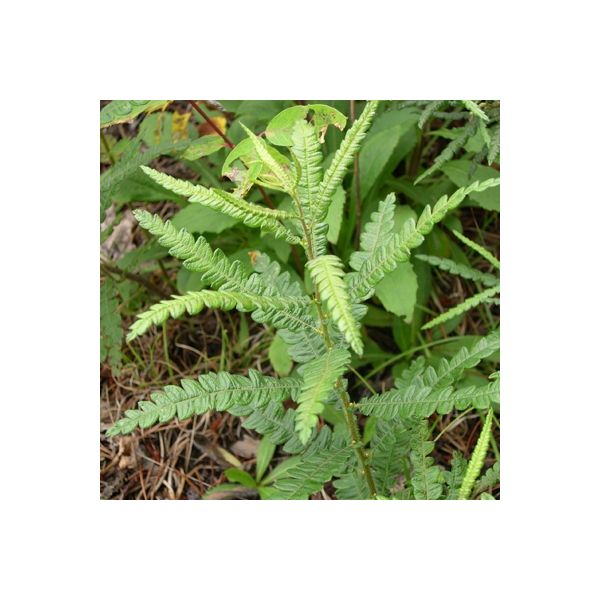| Latin Name: | Comptonia perigrina |
| English Name: | Sweet fern |
| French Name: | Comptonie voyageuse |
| Family: | Myricaceae |
| Origin : | Canada |
History and Origin
Sweet fern grows easily in acid, sandy and dry grounds such as meadows, pastures and woodland clearings. It is frequently found in association with jack pine (Pinus divaricata). It does not tolerate shade and colonizes burnt-out woods and clear cutting sites. Its roots associate with bacteria able to stabilize nitrogen contained in the air. It is a medium-sized shrub with very aromatic leaves, dotted with dark green resiniferous glands recalling fern.
Native Americans use it in infusions to treat headaches, flues, fever and bronchial obstructions. The leaves also help treating diarrhea, skin inflammations (such as poison ivy), affections, and sprains. The root relieves rheumatisms and inflammations whereas fruits and bark would be used to prepare a tonic beverage. Fresh leaves helped conservation when placed at the bottom of a fruit basket.







